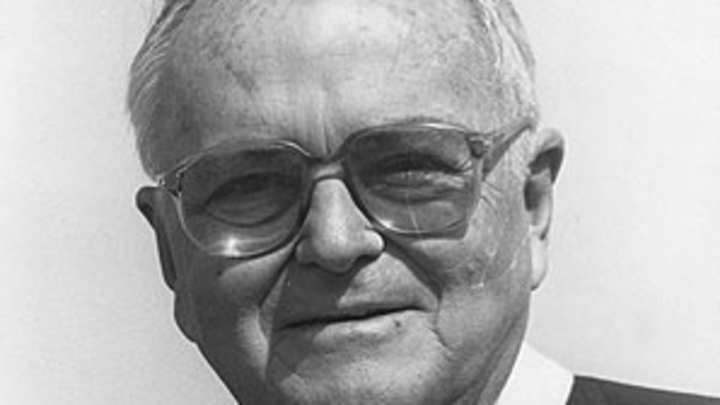Chris Economaki remembered for love, passion of everything racing


Chris Economaki, the trailblazing giant of American motor racing journalism as a reporter, columnist and television broadcaster, died Friday, Sept. 28, at the age of 91.
Known as the "Dean of American Motorsports," Economaki began writing for National Speed Sport News (NSSN), America's longest-running racing publication, at age 13 in 1934 and, after serving in the Army in World War II, also became an announcer at tracks on the East Coast. His knowledge and experience led to him being hired by ABC in 1961 for its coverage on Wide World of Sports. He switched to CBS in 1984 and later worked for ESPN and the Indianapolis Motor Speedway radio network. Economaki worked in the pits and in the booth for IndyCar, NASCAR, Formula 1 and other broadcasts. But among all of these positions, he always continued to work at NSSN.
He became editor and publisher of NSSN in 1950 and later purchased it. NSSN was reborn this year when it was purchased and brought back as a monthly publication and web site. He went into semi-retirement following the closing of NSSN, which published weekly, in 2011 -- it marked the end of Economaki's From The Editor's Notebook, which ran with every issue.
"If 13-year-old Chris Economaki had fallen in love with stick-and-ball-sports, his literary biography might well rival those of Ring Lardner, Grantland Rice and Red Smith," Speed television's Dave Despain said. "Instead, to our eternal good fortune, teen-aged Economaki started hawking Speed Sport News, thus planting the racing seed for the most important racing publication ever. Thanks for everything, Chris."
Economaki's saw his first race at age nine in 1930 on a board track at Atlantic City, N.J., and was immediately hooked. In 1932, his hometown newspaper, the Bergen Herald in New Jersey, began publishing a four-page racing section each week. Young Economaki sold them at HoHoKus Speedway for a nickel, and got to keep a penny of every paper sold. He sold 200 the first week, in the middle of the depression, and made $2; he realized that his passion could also deliver a profit.
The newspaper had so much success with the section that in 1934 it decided to start the first racing newspaper, NSSN. Economaki not only continued to sell them, but also started to contribute stories. In 1936, when he was still in high school, Economaki began writing a column titled, "Gas-o-Lines."
In 1938 Economaki attended his first Indianapolis 500; he drove about 1000 miles and slept in his car outside the speedway the night before the race. "It was a great experience," he said. He returned to Indianapolis in 1948, after serving in the military in World War II, and attended every 500 through 2010.
Economaki never shied from asking the tough questions on television, the pit lane or in interview rooms, and was universally respected in the racing world for his fairness and knowledge. Economaki's was also a good photographer and worked as a track announcer for several decades, a talent he used to transition into television reporting in 1961. Economaki's high-pitched voice became a well-known part of racing broadcasts.
Before the Daytona Speedway was built, stock cars raced on the beach, and Economaki was hired by promoter Bill France Sr. in 1951 to announce.
When the speedway opened in 1959, Economaki became its voice, too. Then, in 1961, the ABC television network hired him as a pit reporter for its first broadcast of the Firecracker 400 at Daytona.
Economaki was a hero at Charlotte Motor Speedway in 1960. He was taking photographs at trackside during the World 600 when Lennie Page was badly injured in a crash. Economaki reached Page before safety workers and used his shirt to stop heavy bleeding from Page's neck, ultimately saving Page's life.
Economaki was inducted into the Motorsports Hall of Fame of America in 1994. He's also a member of the Sprint and Midget Car Halls of Fame and has received numerous other honors.
Economaki worked as a crew member in the late 1930s for Duane Carter in midget racing, but tried driving only once, testing a midget at a dirt track. "It wasn't for me," Economaki said. "It was really a frightening experience."
Even as Economaki slowed down, you were as likely to find him at a short track like Eldora as Daytona or Indianapolis. If it was racing, anywhere, Economaki wanted to know and write about it.
"Racing is my mistress," he explained in a 2002 interview. "I've been around it all my life. Very few people get to make a living doing something that started as a hobby. I'm still fascinated by the sport. I'm going to do it until the checkered flag waves."
